I’m the kind of person who always feels that he has to set expectations in order to head off assumptions, assaults, and questions, so here’s the boilerplate. I am not writing this or any post from a position of authority. I write them because when I am trying to learn A Thing I tend to spend a lot of time traveling the Rabbit Hole Network like it were a Slip ‘n Slide coated in canola oil. I get frustrated with too much information, not enough information, wrong information, old information, and the familiar “why does this not work for me?” information. That’s why when things work and when I am pleased enough with the results to release them to the public, it’s because there’s a long, messy trail of trial and error stretching back behind me to the horizon. I hope that these posts can help others shortcut some of the frustration I experienced and if not, that these posts can serve as a reminder to myself later on when I go back to try something similar. To that end, let’s talk about this video.
This is my latest “Bloomtown play-through” video in which playing the game was the easiest part of the whole process. The first video in this “series” was a pretty straight-up affair with the pre-menu animation captured for a few seconds, the blinking “press any key” message matted out, and a neon text effect added for the episode identification. This rolled directly into the gameplay portion. While this worked, I had just come off watching 2 weeks of Davinci Resolve videos and had gotten certain ideas in my head not just from the instructions, but from the presentation by the instructors. What exactly did these videos have that made them look “professional” aside from about $12,000 worth of production equipment and decades of experience?
Branding
Look, I’m not styling myself as some “second career” video creator. My rabbit holes run deep and this time it just happened to be “video producing”, specifically with Resolve. One thing I know is that if I don’t use my skills after learning them they atrophy very quickly so creating regular “Let’s Play” videos seems like a good way to keep the momentum. On one hand I get additional wind in my sails to keep playing a specific game, and on the other hand I get to keep exercising my production skills. Still, I felt I needed to go above and beyond just Resolve, so I woke up from a dead sleep one night (or so the story goes) realizing that I could merge skills to work together, and this was the result.
That video is built mainly on this:
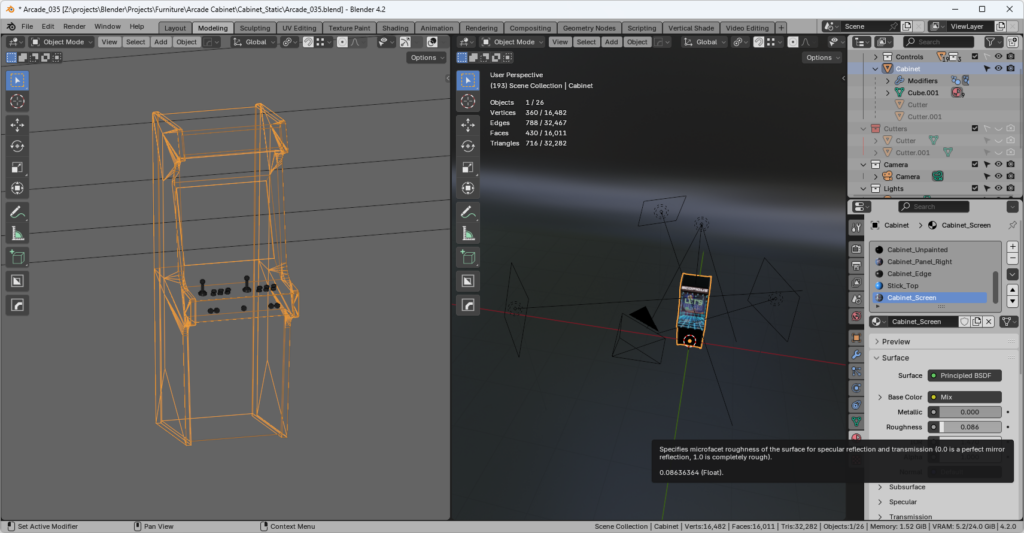
My very first “production ready Blender model and animation”. I had never done animation in blender before, having always concentrated on creating as-nice-as-I-could-make-them still renders, but I felt that this would be a good, relatively simple animation to test the waters with. The project has three animations which were imported into Resolve where the music was added; Blender can handle an NLE workflow, but I didn’t want to spend more time futzing with Blender when Resolve was right there.
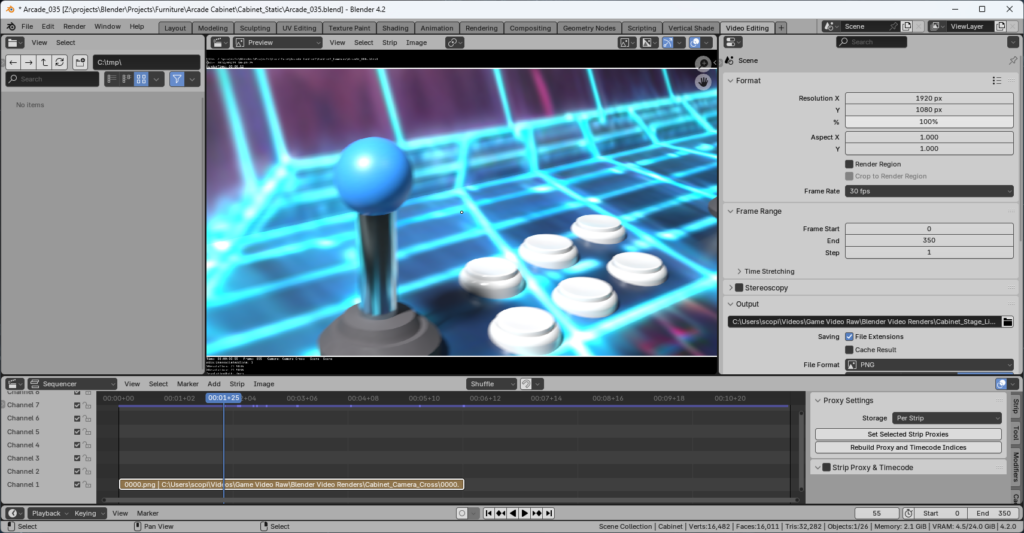
Considering my age, I went with the arcade cabinet motif. The cabinet’s design could serve as a one-stop-shop for everything you need to know: me (name’s in the marquee), what we’re doing here (on the screen), and some retro flair (the cabinet itself). The model itself is cut from whole cloth: I designed the cabinet in a few hours while watching Rifftrax, so I will forever associate this intro with bad movies. The music I got from Pixabay.com and had to pre-emptively upload a license to avoid copyright strike, as Pixabay had warned me ahead of time would happen. I tweaked the rendered animation several times, once because the timings were off, once because the cameras were skewed, and once because I had to bump the FPS from 30 to 60 to match the recorded videos. Of course I’m not 100% pleased with the result, but I am about 90% pleased, and that was good enough to add it to the front of this (and subsequent, with tweaks) video.
I also plan on using this model for an “outro”, because I’m currently fading out at the end of the videos and I’m not sure that sits well with me.
Recap
This was an idea that came to me out of the blue as well, and I think it works very well in the case of the Bloomtown series. Since the game is very story-focused, and because my goal is technically to produce non-epic-length videos (< 1 hour, although Ep 2 got away from me), I thought that serializing the videos and including a recap at the start would help viewers during those times when I’m not able to maintain a release cadence.
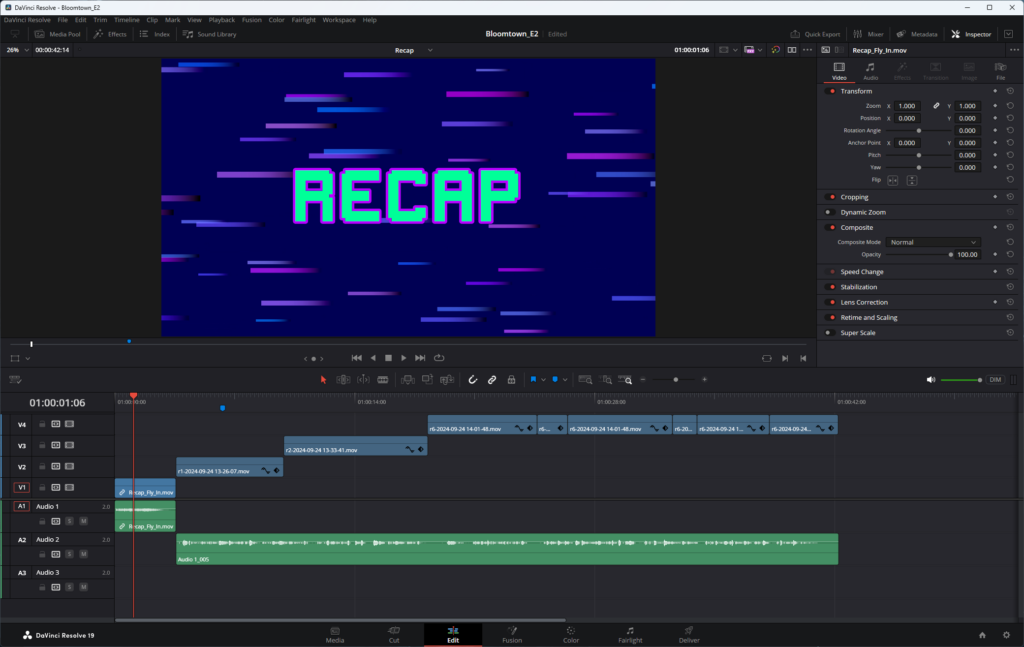
This required me to go back to Episode 1 and distill the video into about 40 seconds through various clips. I wrote a script based on what I remembered about the session, then scrubbed the footage for clips which matched the description, refining for clarity as I went. I used Resolve’s live-recording feature which took some doing to figure out, but was able to watch the clip and keep the text in-time with what I was seeing.
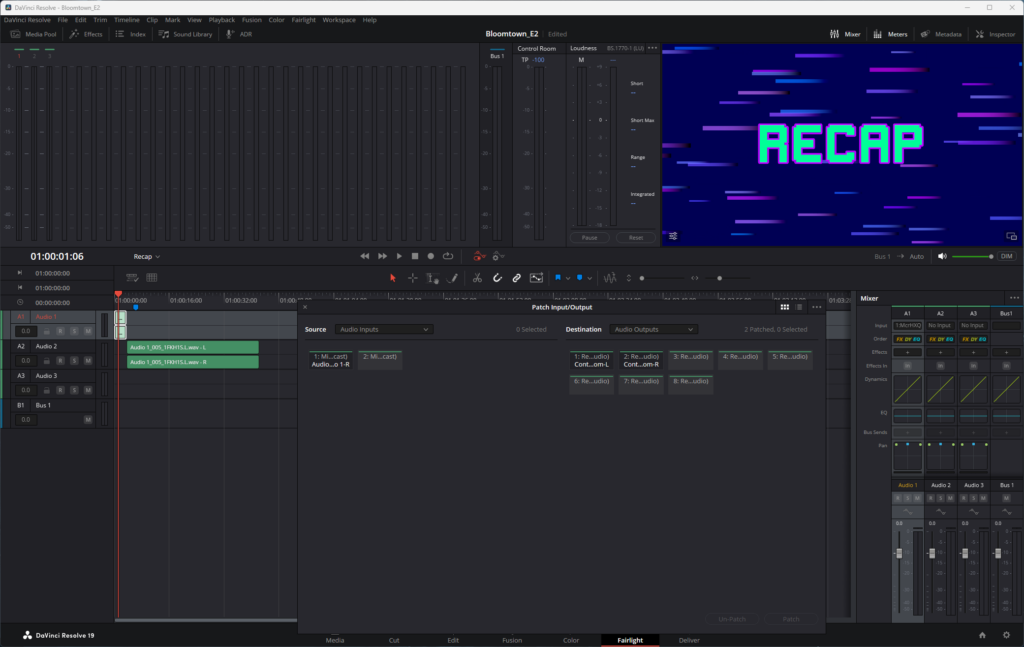
Of course I had to add more animation, and while I am stupidly proud of how it turned out (considering the “short-cut” I took to make it, which will be another post in and of itself), I’m now wondering about the three intro anims — title card, recap, and branding — that I have going on here; too much? Just right? Wrong order? I’ll have to think about it and get feedback.
Editing
Editing is not as simple as one might think, especially since I opted to use my webcam. I had to let go of the idea that every cut had to be unnoticeable but within reason, as any visible jump of significant magnitude will leave viewers wondering if they missed something.
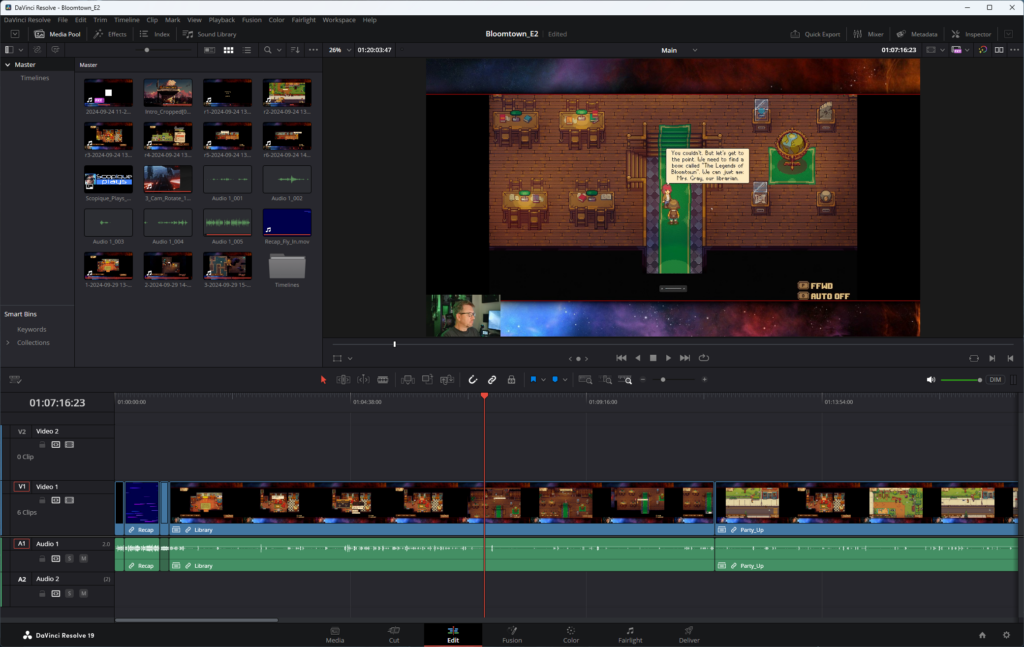
Something I learned was to use Resolve’s “Timeline” feature to break up a complete session into manageable parts. A timeline in this case is a “concern”; for example, in Episode 2, I have “Recap”, “Library”, “Party-Up”, and “Library_Underworld” timelines. Each contains a part of the complete recording, and doing it this way allows for a focus, helps me find specific footage, and keeps Resolve performant. These three timelines are then added to the “Main” timeline which also includes the title card and branding intro.
One rule I made for myself is to cut content of “travel” after the first experience unless something wild happens. In Bloomtown, there’s a lot of navigating the neighborhood and while I feel it’s important that viewers get their own lay of the land by following me as I make the rounds, no one should be forced to spend additional minutes re-navigating the same path twice. In cases like these, where big jumps are expected, I use a transition between clips.
Another rule I’m trying to follow is to just slow myself down when recording. I noticed in previous videos that I had a habit of jiggling the mouse whenever I was talking but not actually doing anything; it was especially egregious when I was referring to something on the screen as I could use the cursor to “circle it” to call attention to what I was talking about. Constantly moving — and constantly talking — makes it difficult to find a good place to cut if a cut is warranted as it’s painfully obvious that a cut has occurred when everything on the screen jumps.
As an addendum, I have found myself becoming critical of exactly what needs to be in a video and what is really ancillary, at least in context. That’s lead to a bit of a philosophical condition in which I contemplate the purpose of these videos: is it to entertain, or to guide? Am I making a product for people to watch and enjoy, or is it a way to help others along who might be playing the same game? I have an offline post semi-written about these thoughts, and I might post it later if I don’t have any other content on deck.
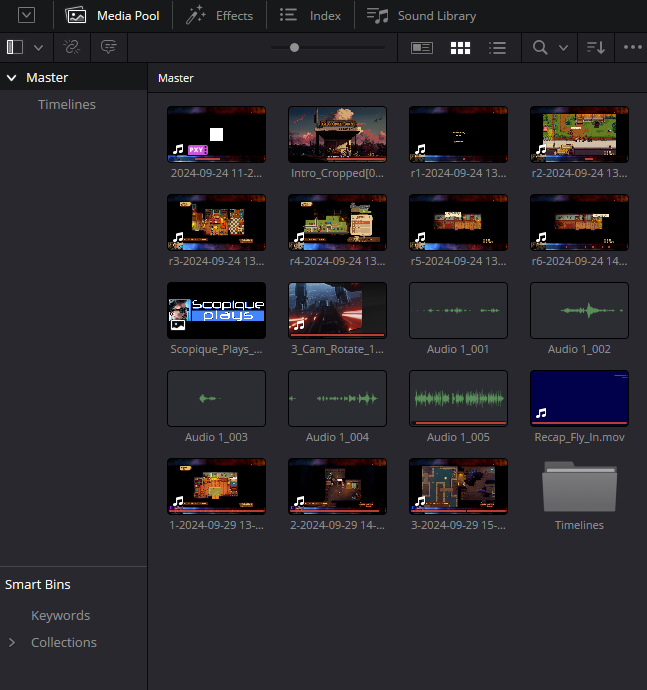
Finally, there’s the “garbage” inherent in A) learning a game as I go, and B) having a memory like a sieve. During those gameplay times when I’m clicking on things trying to remember where I previously found what I am looking for, hitting the wrong keys or buttons, or jumping back and forth between UI elements to thread a conceptual needle, I will cut because the act of stumbling around isn’t the point; it’s the end result that matters. So know that there’s a lot of stuff that gets edited out, and to be honest, it’s kind of fun to see a complete mess of a gameplay session rendered as something that looks confident and coherent in the end.

On thing I need to work on going forward is my organization. I have some content on my home server and some on my local PC. I rendered and deleted Blender animations several times because I kept deleting it after I was “done” with it (Narrator: He was never really “done” with it). While Resolve’s “Media Pool” does a good job of keeping my content wrangled within Resolve, I have spent a lot of time trying to remember where each piece of the puzzle has been stored. Since I now have title cards, still images, animations, audio, and the gameplay clips themselves, I need to get much better at reducing the hunt for these items for future productions.

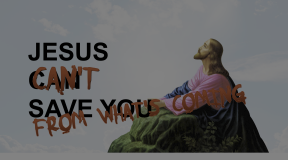

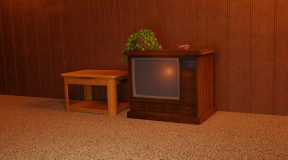
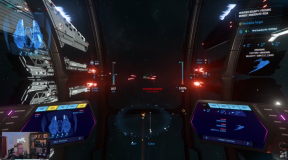
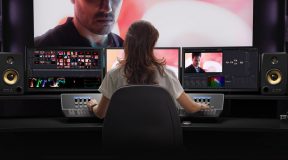
4 Comments
Stargrace
September 30, 2024 - 8:02 am” and the familiar “why does this not work for me?” information”
This touched home for me. Thanks to your deep dive into recording I decided to give it a try myself, and while I am *no where* near your levels (I’m still back at stage 1, record + slap a thumbnail + call it a day) I also started messing with Resolve just to adjust some audio. What (I thought) should have just been a simple “click this button, click save, upload!” ended up being 2h of chasing around why I couldn’t save my damn video with the adjusted sound, learning about what the hell a timeline was, and trying to only stick to my current issue because otherwise things were REALLY going to go off rails.
I don’t think I ever really noticed or appreciated the amount of background stuff that goes on first in order to have any sort of production value at all. I hope that I’m able to stick with it for a while, and do some learning. I appreciate the blog posts you’re making about your process! It gives me incentive to stick with it, that it’s not just me, and that it IS indeed a process.
Scopique
September 30, 2024 - 8:33 amI’m happy to see folks getting into/back into video work. It’s like the proverbial rising tide, raising boats of pushing forward to keep working, learning, and getting better together!
I’ve also come to realization that some/many/most/all of the “professional grade” videos we see on the Internet MUST have at least two people if not more making it all happen. Maybe some of them started out trying to do it all themselves, but I can see why these kinds of efforts can bloom into a larger production very quickly!
Nimgimli
September 30, 2024 - 2:39 pmOne thing I’ve seen used to go effect for the traveling time is to just speed up the video. That way the view doesn’t get “lost” as you seemingly teleport from one place to another, but they don’t get bored watching you walk back and forth slowly.
I dunno how much work this is, though. Probably a substantial amount.
Scopique
September 30, 2024 - 6:59 pmYeah, it’s called “time remapping” and I HAVE used it in some recent Star Citizen videos of me moving boxes around. I’d use it in cases where the process is kind of important to see, but it still takes time and I’d LIKE to keep the videos as short as humanly possible.
Comments are closed.